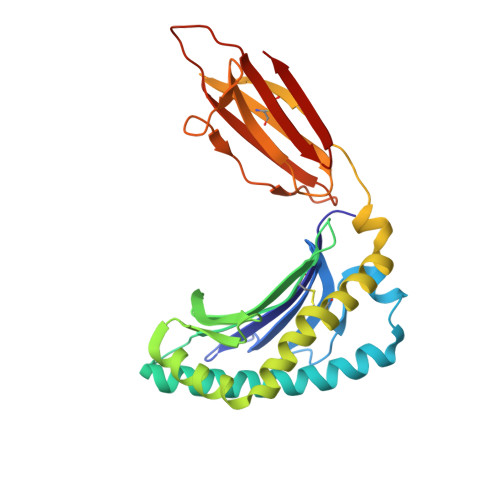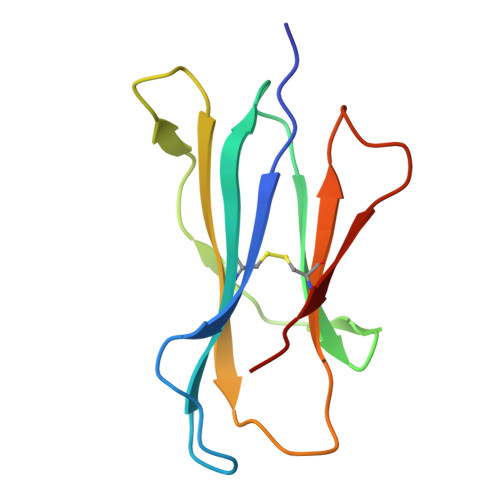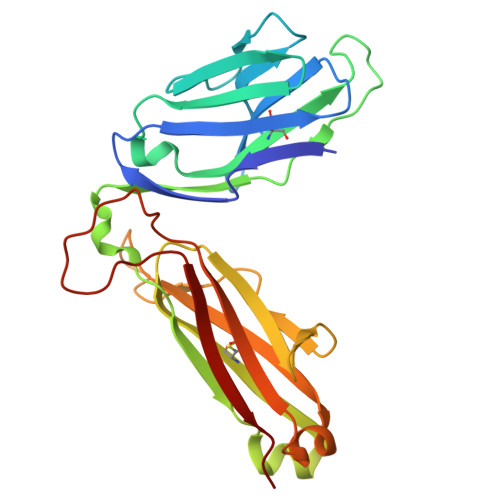Cigarette smoke components modulate the MR1-MAIT axis.
Awad, W., Mayall, J.R., Xu, W., Johansen, M.D., Patton, T., Lim, X.Y., Galvao, I., Howson, L.J., Brown, A.C., Haw, T.J., Donovan, C., Das, S., Albers, G.J., Pai, T.Y., Hortle, E., Gillis, C.M., Hansbro, N.G., Horvat, J.C., Liu, L., Mak, J.Y.W., McCluskey, J., Fairlie, D.P., Corbett, A.J., Hansbro, P.M., Rossjohn, J.(2025) J Exp Medicine 222
- PubMed: 39820322
- DOI: https://doi.org/10.1084/jem.20240896
- Primary Citation of Related Structures:
9BTX, 9BTY, 9BTZ, 9BU0 - PubMed Abstract:
Tobacco smoking is prevalent across the world and causes numerous diseases. Cigarette smoke (CS) compromises immunity, yet little is known of the components of CS that impact T cell function. MR1 is a ubiquitous molecule that presents bacterial metabolites to MAIT cells, which are highly abundant in the lungs. Using in silico, cellular, and biochemical approaches, we identified components of CS that bind MR1 and impact MR1 cell surface expression. Compounds, including nicotinaldehyde, phenylpropanoid, and benzaldehyde-related scaffolds, bound within the A' pocket of MR1. CS inhibited MAIT cell activation, ex vivo, via TCR-dependent and TCR-independent mechanisms. Chronic CS exposure altered MAIT cell phenotype and function and attenuated MAIT cell responses to influenza A virus infection in vivo. MR1-deficient mice were partially protected from the development of chronic obstructive pulmonary disease (COPD) features that were associated with CS exposure. Thus, CS can impair MAIT cell function by diverse mechanisms, and potentially contribute to infection susceptibility and disease exacerbations.
- Infection and Immunity Program and Department of Biochemistry and Molecular Biology, Biomedicine Discovery Institute, Monash University, Clayton, Australia.
Organizational Affiliation:






















